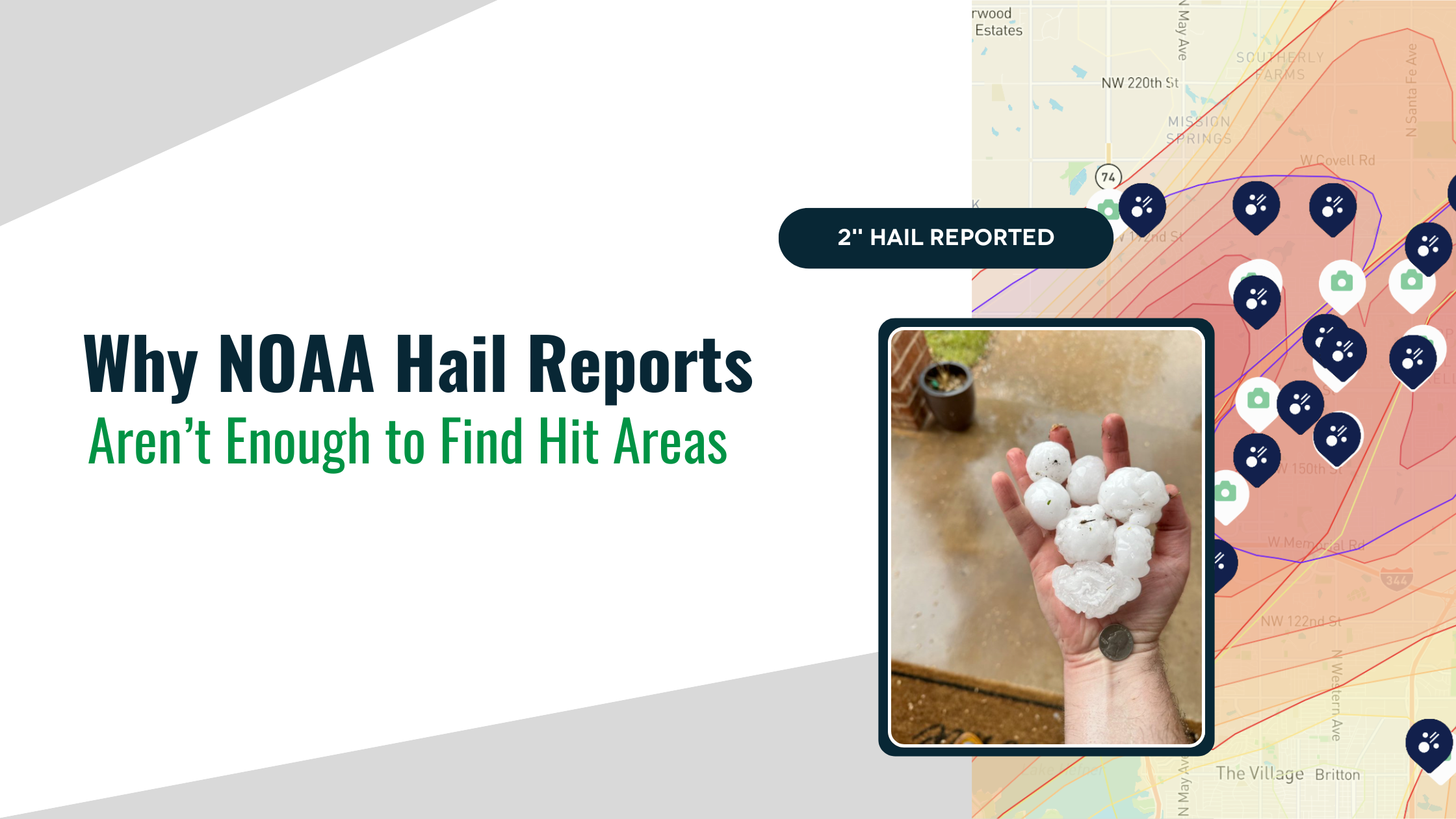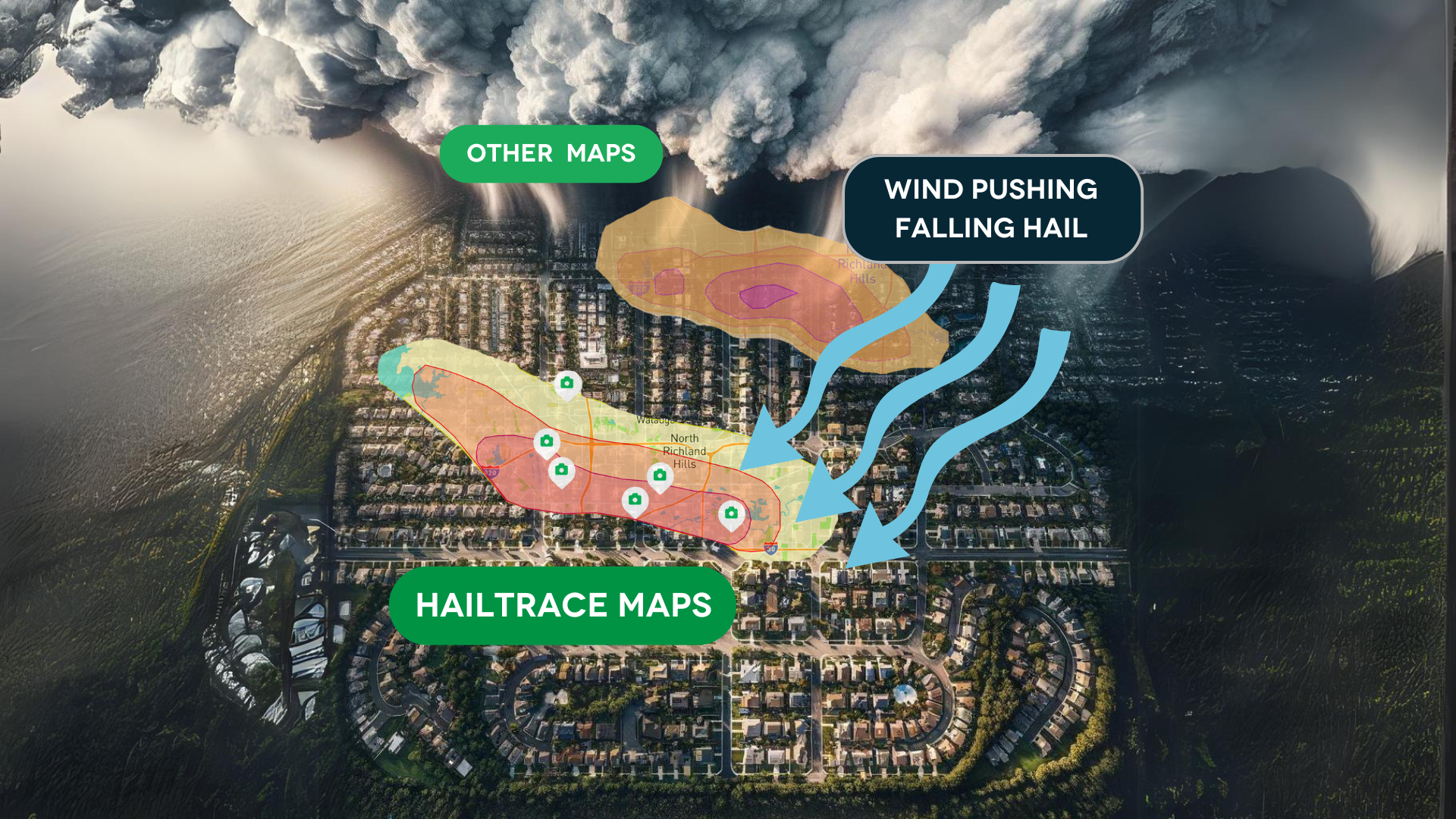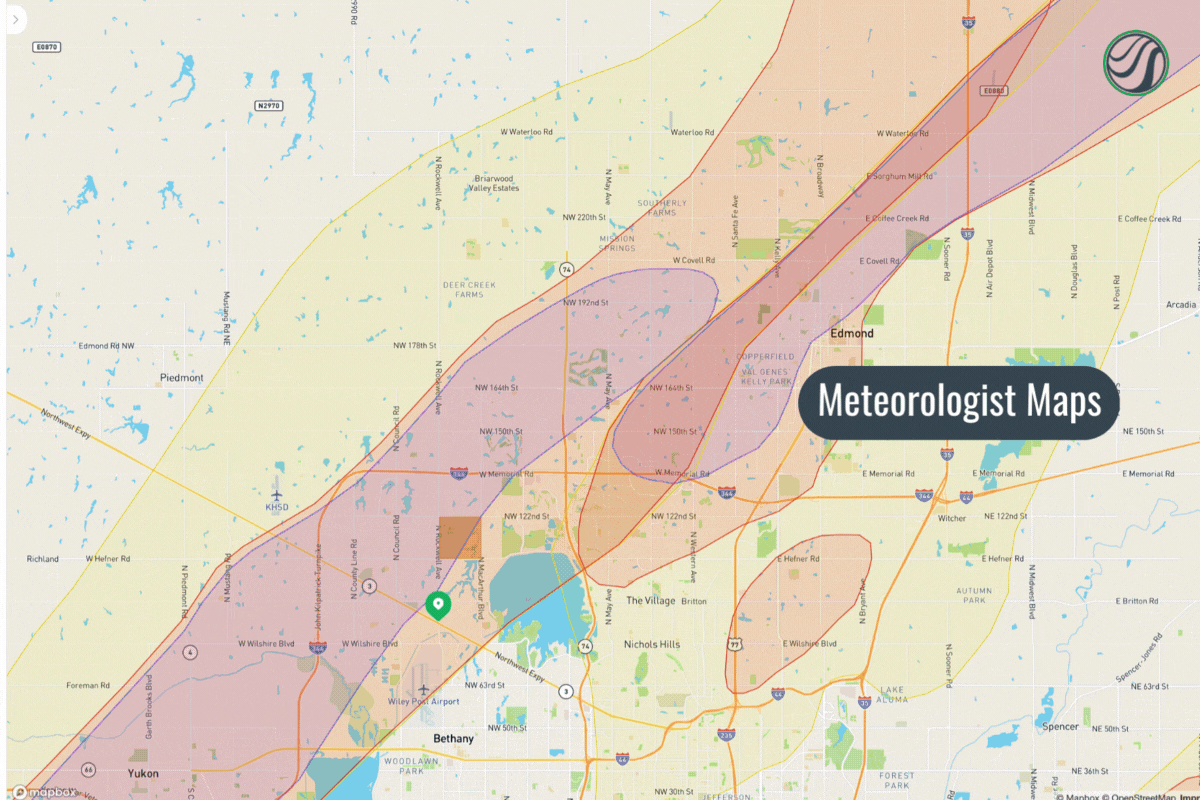Why NOAA Hail Reports Aren't Enough to Find Hit Areas
Why does your sales or marketing team end up targeting the wrong area? It comes down to the sources you use to find hail-hit areas. There are many tools out there. But if you are not careful, they can lead your team astray

One thing that surprised me in diving into the restoration industry is the unparalleled energy contractors bring for the season's first big storm. They jump onto NOAA or Facebook and wait for the hail reports for today.
It is like the anticipation of watching the episode finale of your favorite show. You hope, you speculate, and you wait…impatiently sometimes. But the difference is that this first storm is just the beginning of what will unfold that year.
What kills that excitement is pulling up to a neighborhood unaffected by a hail storm. It is more than a few days lost by your sales team or a couple hundred dollars wasted on mailers.
It is the lost potential that is irritating.
While your sales guys were wasting time jumping on roofs without being hit by a hail storm, competition has already secured the first several deals in the impacted area, giving them a leg up on claiming the entire neighborhood. Calculate into the equation the missed referrals and the true lost potential is frustrating.
I believe this is why, in part, so many roofing companies or PDR companies go out of business. They miss crucial opportunities enough times, and they get beat out by competition.
The Limitations of Hail Reports for Today
Why does your sales or marketing team end up targeting the wrong area? It comes down to the sources you use to find hail-hit areas. There are many tools out there. But if you are not careful, they can lead your team astray.
Before you start searching today's hail reports, know the limitations of the sources you use.

NOAA Hail Reports
The National Oceanic and Atmospheric Administration (NOAA) plays a crucial role in providing weather and hail reports for today, but it faces challenges. To start, there is missing data from areas that were hit by hail but were never reported.
Additionally, contractors sometimes call in false reports to mislead others, and accurate hail reports are often misplaced. For example, hail reported in "Dallas" is frequently marked at the city center, while the actual impact might be 5-10 miles away.
Thus, when hail is falling, NOAA hail reports should only be one source you use to find today's hail reports.
National Weather Service (NWS)
The National Weather Service (NWS) is a government agency created to warn residents of severe storms, including hail storms. Thus, it focuses on a hail storm’s potential rather than actual events post-storm. The hail reports for today from NWS might not always reflect the precise aftermath.
Social Media
Social media is a source of truth that can be valuable in confirming what is happening on the ground. However, it can be time-consuming and lacks the precision of pinpointing the exact areas hit. Thus, I recommend using social media as a secondary source of truth to verify the hail reports for today.
Local News
Your local news station uses the same data as the National Weather Service, thus having the same issues of showing what could happen, not what did happen. What contractors need are accurate hail reports for today that show what actually happened post-storm.
Other Algorithm Hail Maps

Most companies that provide hail maps use algorithms that track hail at 20,000 feet and assume the hail will fall straight to the ground. This method creates inaccuracies due to factors like wind that pushes hail as it falls. Finding today's hail reports from these algorithm hail maps might not always be reliable.
All-in-One Platform to Paint a Full Picture of a Hail Storm

At HailTrace, our solution is providing an unparalleled wealth of hail-related data into one platform. It saves you time while giving you critical tools to ensure you are always one step ahead in finding areas with a high risk of storm damage.
1) Real-time Meteorologist Hail Maps
HailTrace is in a league of its own, thanks to our dedicated team of meteorologists who are all about crafting hail maps as events unfold.
These aren't just any maps; they're a blend of art and science, fine-tuned to sift through the clutter of abnormal data, dissect hail reports, and pinpoint sudden weather twists and turns. This unique approach guarantees our maps deliver insights and a level of detail unmatched by anyone else out there.
2) Real-time Algorithm Hail Maps
Our hail maps go beyond the standard algorithm-based models by accounting for factors that affect hail movement as it falls.
This precision allows our maps to redefine storm tracking. It’s akin to having a navigator that not only shows the storm’s path but also illuminates its intricate impact with unparalleled clarity.
3) NOAA & Social Media
By integrating vetted NOAA hail reports with on-the-ground images from social media into our app, we allow you to create a comprehensive story of each storm.
This approach offers a 360-degree view of the storm, ensuring you can target the neighborhoods with the highest risk of needing restoration. When these hail reports for today are combined with our real-time hail maps, you have four powerful tool
Your Story After a Hail Storm
Before storm season starts, Derik, our CEO, gives his annual hail forecast. The day we hosted the event in Chicago, there were two storms moving into Illinois. A high probability for something big.
It was there that I first experienced the electricity that comes from the season's first storm.
What I would hate for you and your team is to lose that energy by ending up in the wrong area. With our blend of real-time hail maps and supportive evidence, that does not have to be you. You can face this storm season with the insight needed to make decisions with confidence.
Find our plans and you can go from responding to a storm to being at the right place, before the competition.

